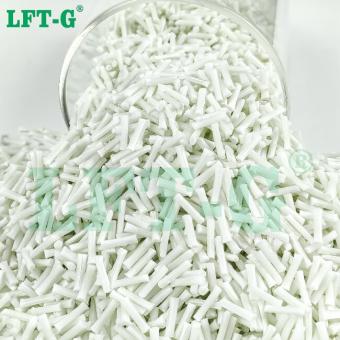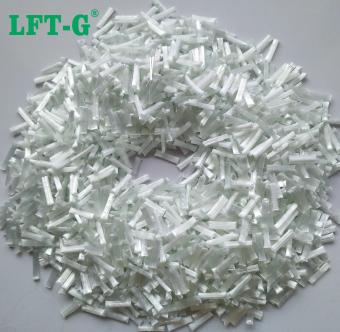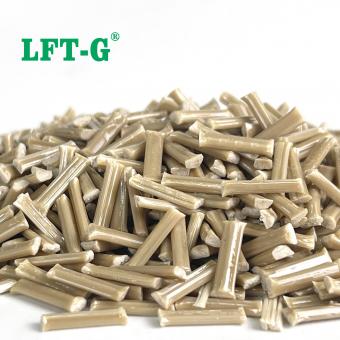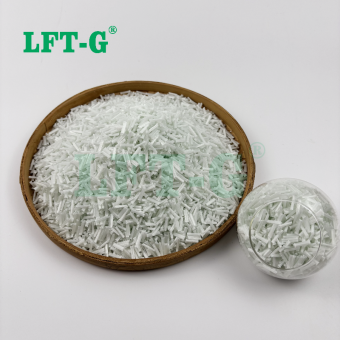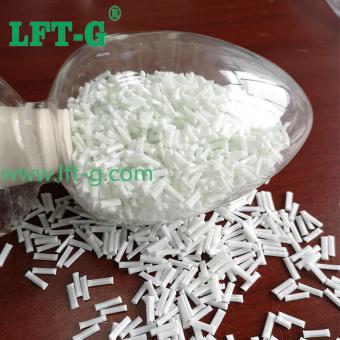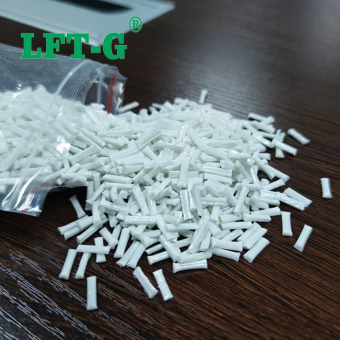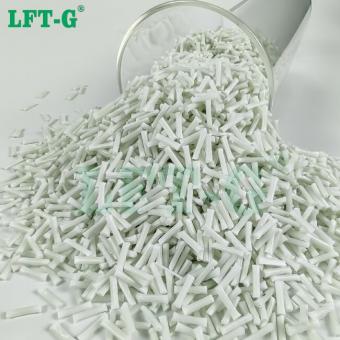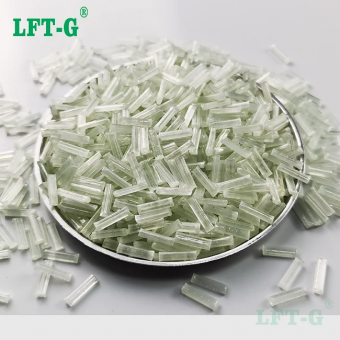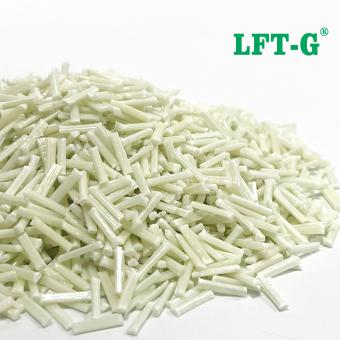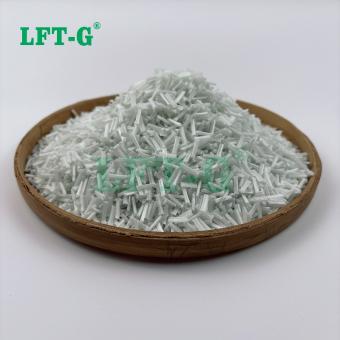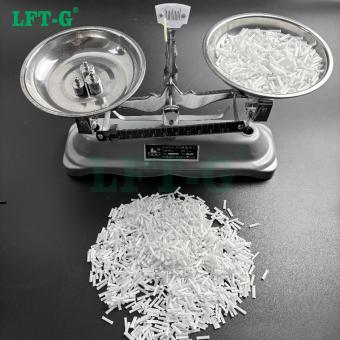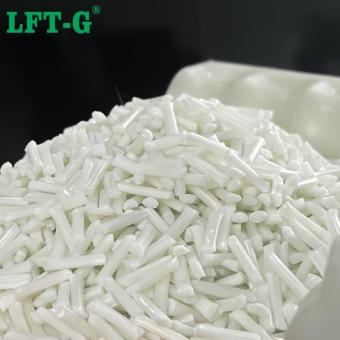Long glass fiber has high strength, high rigidity, corrosion resistance, harsh environment suitability and low cost. When the resin matrix is impregnated and extruded into pellets ,Also called Long Glass Fiber Polymer it has good mechanical properties.
-
Glass Fiber Reinforced PP Pellets High StrengthPolypropylene, also known as PP or polypropene, is a polyolefin or saturated polymer. It is a low-density thermoplastic with good resistance to heat. Other characteristics of PP include: chemical resistance, elasticity, toughness, fatigue resistance, and electrical insulation capability.
- long glass fiber reinforced polypropylene
- wind turbine composite materials
- pp-lgf30
- oem polypropylene fiber
- long fiber thermoplastic
- fiber forms
Tags :
-
PLA Recycled Materials Green Plastics Long Glass Fiber Plastic CompoundsPLA-LGF can be processed using conventional plastic processing techniques like injection molding and extrusion, offering good adaptability in manufacturing. It is widely used in industries like automotive, consumer electronics, 3D printing, and eco-friendly packaging due to its combination of high performance and sustainability.
- gfrp price per kg
- types of fibers in composites
- long fiber thermoplastics
- wind turbine composites
- wholesale glass fiber
- glass fiber material properties
Tags :
-
High Performance PPS Engineering Plastics Long Glass Fiber Plastic CompoundsLFT®PPS-NA-LGF is glass reinforced PPS compound, which is filled with glass fiber based on the PPS resin. The characteristic of PPS compounds includes good mechanical properties, high rigidity, high creep resistance, high temperature resistance.
- pps resin suppliers
- composites for ev battery
- long fiber thermoplastics metal replacement
- polymers used in aircraft
- long fiber composites
- types of fibers in composite materials
Tags :
-
Polypropylene Homopolymer Long Glass Fiber Plastic CompoundsThis nature is not lost when they are combined with fiberglass. PP-GF Compound plastic is not only light but also very durable. Therefore, they are suitable in industries such as automobiles, aerospace, heavy industry,...
- pp gf 20
- glass filled pp
- copolymer homopolymer
- is copolymer plastic
- thermoplastic composites applications
- lft kft
Tags :
-
Excellent Regidity Nylon MXD6 Long Glass Fiber Plastic Injection MoldingMXD6, or poly(m-xylylene adipamide), is a high-performance aromatic nylon known for its excellent gas barrier properties, thermal stability, and mechanical strength. When reinforced with long glass fibers (LGF), MXD6 composite materials exhibit significantly enhanced performance characteristics ideal for demanding industrial applications.
- nylon with glass fiber
- pa mxd6
- mxd6 polyamide
- nylon fiber uses
- about nylon fiber
- fiber reinforced nylon
Tags :
-
Excellent Regidity PBT Long Glass Fiber Plastic Injection MoldingAdding glass fiber to PBT is a commonly used method to enhance and modify PBT. The bonding force between glass fiber and PBT resin is good. After adding a certain amount of glass fiber to PBT resin, it can not only maintain the original advantages of PBT resin such as chemical resistance and processability, but also greatly improve its mechanical properties and overcome the problems. PBT resin notch sensitivity.view more
-
Excellent Regidity PE Long Glass Fiber Plastic Injection MoldingThis material combines high-density polyethylene (HDPE) with long glass fibers for enhanced mechanical strength, impact resistance, and dimensional stability. It is ideal for structural applications requiring durability, lightweight, and chemical resistance, commonly used in automotive, industrial, and outdoor products.
- pe high density
- pe high density material
- high density polyethylene density
- high density polymer
- high density polyethylene
Tags :
-
Excellent Flexibility TPU Long Glass Fiber Plastic Injection MoldingTPU (Thermoplastic Polyurethane) long glass fiber reinforced composite is a high-performance material that combines the excellent flexibility, abrasion resistance, and weatherability of TPU with the superior strength and dimensional stability of long glass fibers.view more
-
High Temperature Resistance PPA Long Glass Fiber Plastic Injection MoldingLFT®PPA-NA-LGF is a 20%-60% long glass fiber reinforced, heat stabilized polyphtalamide PPA, with improved friction properties, high heat deflection temperature, very high flexural modulus and low moisture absorption.
- modified polymers
- fiber glass fiber
- ppa polyphthalamide
- fiber glass density
- glass fiber prepreg
- fiber glass manufacturer
Tags :
-
High Impact Resistance ABS Long Glass Fiber Plastic Injection MoldingABS is often used as a replacement for metal in the automotive industry. Various automotive parts that look for weight reduction factors use ABS thermoplastic.
- glass fiber reinforced composite
- abs plastic
- abs plastic molds
- abs plastic materials
- abs plastic enclosure
- abs plastic cost
Tags :
-
High Toughness PA12 Long Glass Fiber Plastic Injection MoldingPA 12 is a good general-use plastic with broad additive applications and is known for its toughness, tensile strength, impact strength and ability to flex without fracture. PA 12 has long been used by injection molders due to these mechanical properties. If you’re considering converting metal parts to plastic, PA12 will be a good choice.
- pa 12 nylon
- nylon 12 melting point
- nylon 12 3d printed
- nylon 12 material properties
- reinforced fiber glass
- glass fiber reinforced polymers
Tags :

 e-mail
e-mail English
English français
français Deutsch
Deutsch русский
русский italiano
italiano español
español português
português العربية
العربية 日本語
日本語 한국의
한국의 中文
中文












